

Algebraic surfaces, defined as the zero set of a polynomial function in three variables, present particular problem for visualizing, especially if the surface contains singularities. Most algorithms for constructing a polygonization of the surface will miss the singular points. We present an algorithm for polygonizing such surfaces which attempts to get accurate representations of the singular points. A client-server approach is used to enable the visualization of the polygonal mesh in a web browser. The client is a Java applet which uses the Javaview library which allows the 3D rotation and scaling of the object. The server is a C program which takes the definition of the surface and calculates the polygonization. The client connect to the server using the CGI protocol. This system allows algebraic surfaces to be viewed in any web browser on any platform.
Many famous surfaces are defined as algebraic surfaces
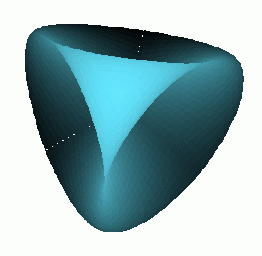
| 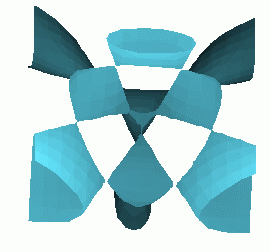
| 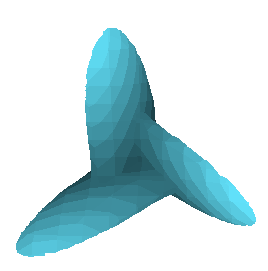
|
| Steiner's Roman Surface | Kummer Surface | Boys Surface |
The Kummer surfaces form a parametrised family of surface.
Of particular interest are surfaces which contain singularities
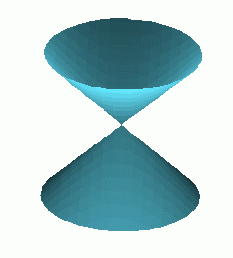
| 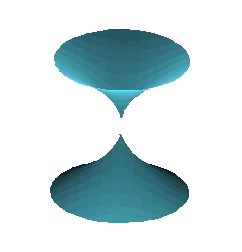
| 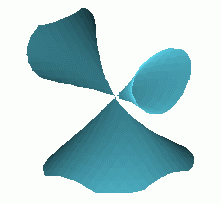
| 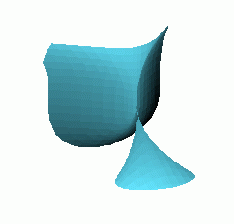
|
| A1: x^2 + y^2 - z^2=0 | A3: x^2 + y^2 - z^4=0 | D4: x^2 y - y^3 - z^2=0 | E7: x^3-x y^3 - z^2 =0 |
These provide a particular challenge for accurate rendering.

| 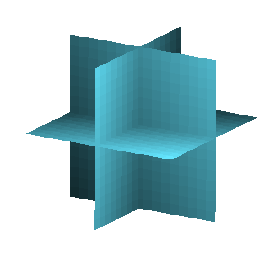
| 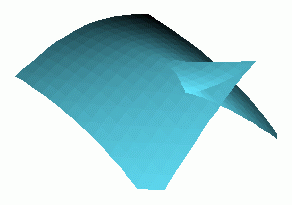
|
| Cross Cap: x^2 y - z^2 = 0 | triple point: x y z = 0 | Swallowtail: 4 z^3 y^2 - 27 y^4 + 16 x z^4 -128 x^2 z^2 - 144 x y^2 z + 256 x^3 = 0 |
The swallowtail surface is the discriminate surface for the set of quartic polynomials x^4 + a x^2 + b x + c. Giving values of a,b,c where the polynomial has a repeated root.
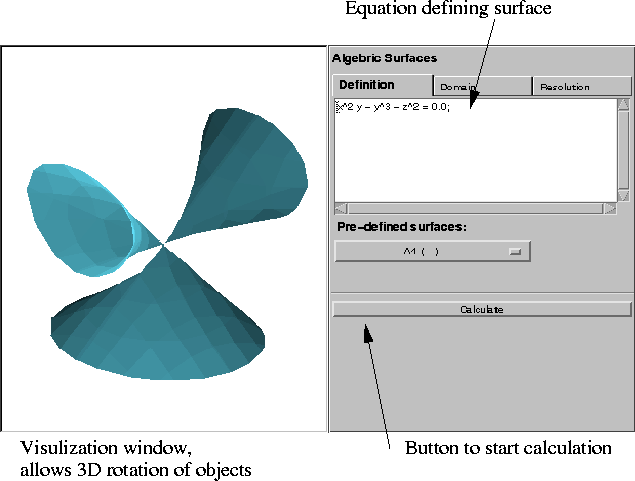
Fairly sophisticated syntax allows substitutions, vector operations and symbolic differentiation.
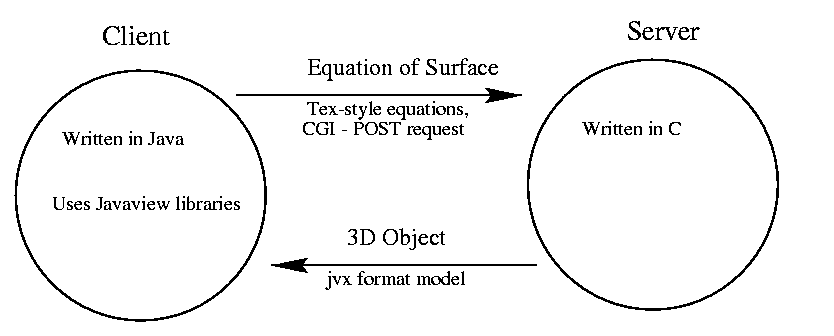
In 1-D a polynomial B(x) of degree n can be written as

where the bi are the Bernstein coefficients. Easy extension to 3-D.
If bi > 0 for i= 0 ... n
Then B(x) >0 for x in [0,1]
This gives a quick test to see whether a region contains a zero. The reverse does not necessarily follow.
f(x,y,z) will have a singularity at (x,y,z) if

This may be an isolated point, a double cone or some more complicated singularity depending on the values of the higher derivatives.
A test on Bernstein coefficients is used to test for the possible presence of singularities
In each smaller box various different types of solution are found.
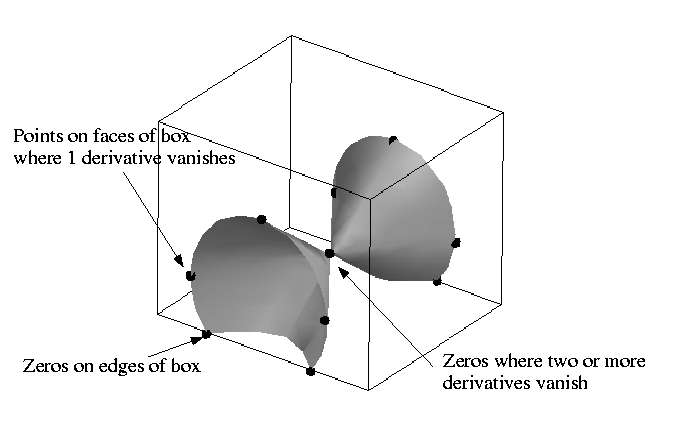
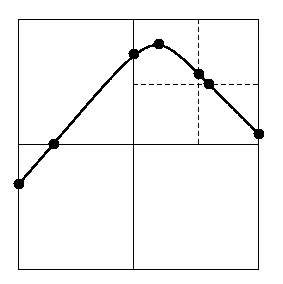
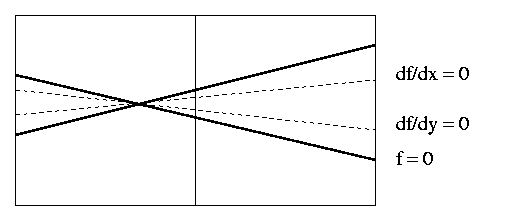
In both cases two derivatives vanish in each box.
However, only the left hand box should be marked as containing a node.
This situation cannot be resolved by finer subdivision
Used to find two different types of solution:
Recursive subdivision of the boxes is used to find solutions where two or more derivatives vanish.
Often many false singularities found.

Information gathered in the previous steps used to find how solutions link together.
The program was first written in 1992 and used the Geomview visualisation program.
In 1999 it was adapted to run as server producing VRML models, in a client-server system.
In 2000/2001 it was modified to produce JVX models and a user interface was constructed using the Javaview package.